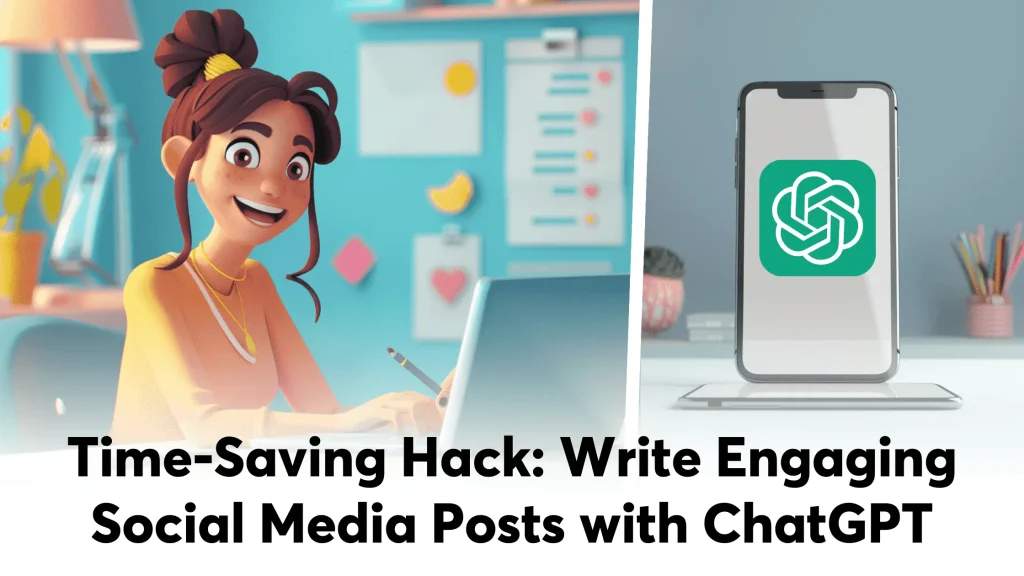We are living in an era where businesses are going the extra mile to connect with their audiences. And social media platforms have emerged as one viral tool for businesses to expand their reach and accessibility.
However, it is important to create quality content on social media to reach the right audience. And making quality content can be complex as well as a time-consuming process. But you don’t have to do all the work on your own anymore. You can now use ChatGPT to create high-quality content easily and quickly.
ChatGPT is an AI tool developed under Open AI to create a wide range of content that is very similar to human responses. ChatGPT for social media can be used for writing captions, promotion strategies and ads, creating content schedules, and much more.
Now we know that ChatGPT can help revolutionize our social media profiles. But understanding how to make the most of it can help us use it to our maximum benefit. Continue reading this blog to learn more about using ChatGPT to write social media posts.
Table of Contents
ToggleUsing ChatGPT prompts for captions
One of the most intriguing things about social media is its interesting captions. A good caption is a must to connect with your audience and spread your vision or mission. It also helps enhance the content of the image. Thus, a good caption is quite crucial. If you’re someone struggling to create good captions, then it’s time to start trusting social media prompts for your captions.
ChatGPT helps create captions that are catchy and easily relatable to your audience, expanding your visibility on social media. Also, using ChatGPT prompts for caption creation can make your captions more enriching, informative, or anything else that you want them to be.
Here are some examples of ChatGPT prompts you may use to create captions:
Caption for service launch: Draft me a caption to launch our new service. The service is (Describe the service briefly).
Event oriented captions: Suggest a (humorous, informative, any genre) caption for the upcoming event. ( Give details of the event)
Understand Your Audience
There is no denying that your brand voice will be a reflection of your company’s value. However, don’t forget the fact that you’re creating this voice to connect with your consumers. So, doing consumer research is quite crucial. Jot down the factors, like what you are offering and how it is different from all the stuff already existing. How are your services useful for your consumers? Then assess whether the brand pitch hits your audience.
Knowing what type of audience your brand caters to and then framing a brand voice can be an effective solution. For example, if an audience is following an entertainment channel, it is important to develop their website with entertainment voice and news and not academic articles.
Using ChatGPT prompts for posts
It needs not be mentioned that social media is all about engagement. Thus, creating engaging posts can help you easily catch attention and improve your customer engagement.
However, sharing all the old-age basic posts in your feedback may turn out to be boring sometimes. ChatGPT can come in really handy here. ChatGPT prompts for social media posts can make your simple posts turn into engaging ones with exciting CTAs. So, you get better engagement and better conversion—everything you need with ChatGPT.
Here are some examples of ChatGPT prompts you may use for your post generation:
Article Posting: Suggest me some topic ideas for article posting on ( subject description).
Blog writing: Draft a conclusion for the following topic ( topic’s name). Also include keywords (mention the keywords)
Using ChatGPT for building inspiring quotations
Businesses must share diverse content on their social media platforms. Posting diverse content lets your consumers explore your creativity and innovations. You can post simple pictures, ads, or even inspiring quotations.
For small businesses with a focus on health and lifestyle services and products, using quotations can do wonders. ChatGPT allows you to post interesting and relatable quotes to share with your audience.
Here is an example of GPT prompts for inspiring quotations:
Create inspirational quotes on the topic ( topic’s name)
Use ChatGPT for image creation
An image can do a lot for your whole social media presence. It makes your profile more appealing. Also, people are more likely to share posts with pictures than bland ones. So, you may use ChatGPT here as well.
It may help you design visuals with your desired quote or message.
ChatGPT can create different kinds of themes and images to put forward your thoughts, so you don’t have to worry about variety.
Here is an example of a GPT prompts you may use for image creation:
Create an image of a city with rivers, forests, and human settlements.
BONUS TIP: You Can Use ChatGPT for repurposed content
Creating new, authentic posts can help engage new audiences. However, your older content can also be repurposed. However, ensuring the relevance of repurposed content is more beneficial. Here, you may also use ChatGPT prompts for social media to create new content out of your existing ones. This is also an effective strategy to backlink your content and make it more reachable and trustworthy.
Here is an example of ChatGPT prompt you may use for repurposed content:
I am digital marketer and I need to prepare a video script from the blog created by my company. Provide me a script outline of 500 words including questions, answers, and important points.
Conclusion
Maintaining the visibility of your social media can be a complicated task. However, ChatGPT can ease your work without compromising your content quality. However, always ensure your social media prompts for ChatGPT should be authentic. This reflects your brand’s voice and personality. Further, understanding your goal and audience can also help you create better ChatGPT prompts.
However, creating ChatGPT prompts sometimes may look technical or you may suffer with other challenges like lack of subject details. Small Biz Marketing helps you create any kind of content you want. We also add other details like keywords, length of your content, desired tone, and more to make it more specific to your brand’s voice and goals.







